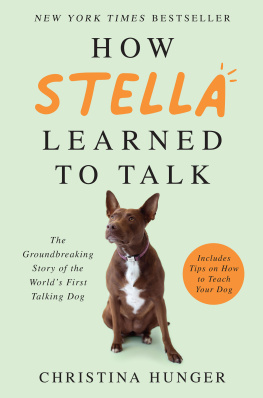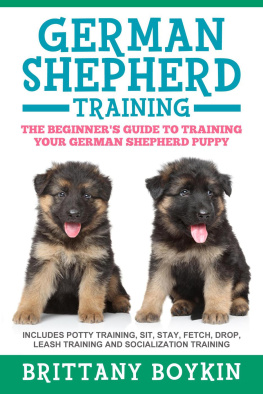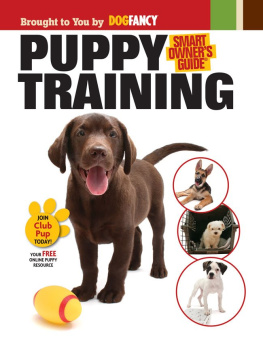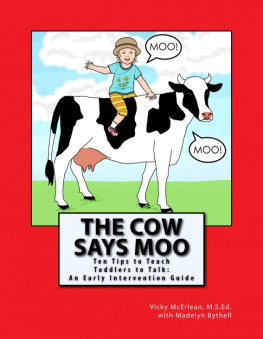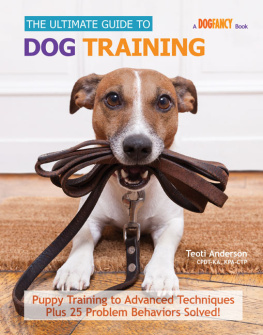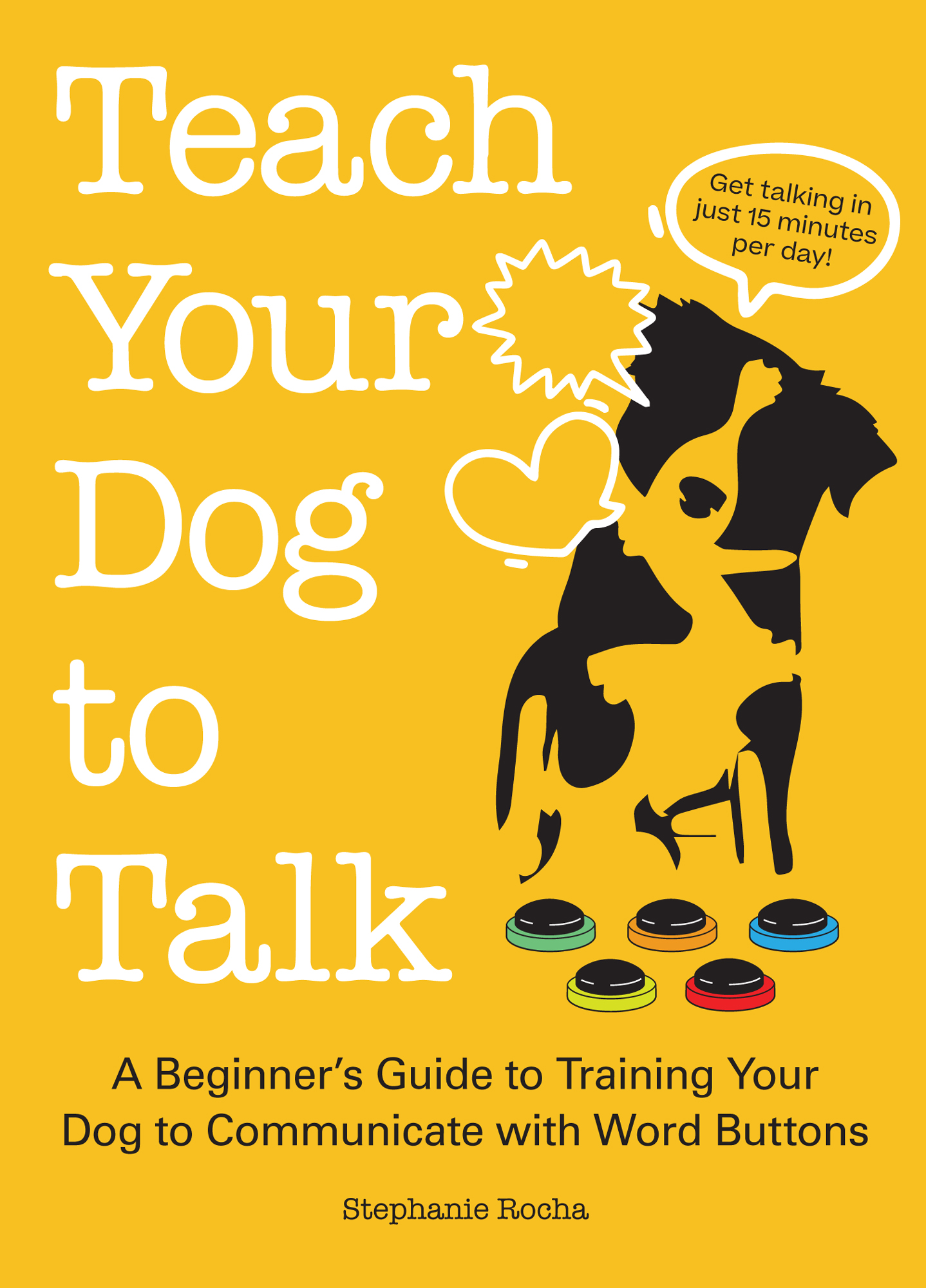Contents
Guide
Teach Your Dog to Talk
Get talking in just 15 minutes per day!
A Beginners Guide to Training Your Dog to Communicate with Word Buttons
Stephanie Rocha
Text copyright 2021 Stephanie Rocha. Concept and design copyright 2021 Ulysses Press and its licensors. All rights reserved. Any unauthorized duplication in whole or in part or dissemination of this edition by any means (including but not limited to photocopying, electronic devices, digital versions, and the internet) will be prosecuted to the fullest extent of the law.
Published by:
Ulysses Press
PO Box 3440
Berkeley, CA 94703
www.ulyssespress.com
ISBN: 978-1-64604-254-8
ISBN: 978-1-64604-276-0 (eBook)
Library of Congress Control Number: 2021937754
Acquisitions editor: Claire Sielaff
Managing editor: Claire Chun
Project editor: Renee Rutledge
Proofreader: Joyce Wu
Front cover design: Raquel Castro
Interior design and layout: what!design @ whatweb.com
Production assistant: Yesenia Garcia-Lopez
IMPORTANT NOTE TO READERS: This book is independently authored and published and no sponsorship or endorsement of this book by, and no affiliation with, any celebrities, products, brands, or other copyright and trademark holders mentioned within is claimed or suggested. All trademarks that appear in this book belong to their respective owners and are used here for informational purposes only. The author and publisher encourage readers to patronize the quality brands mentioned in this book.
To Casper and Chico.
Thanks for being so smart and funny.
Introduction
Hello, and welcome to Teach Your Dog to Talk!
If youre reading these words, you obviously want to learn how to communicate with your dog or any other species of pets (cat/lizard/horse/peacock/lemur/pig) that are currently students/learners of animal Augmentative and Alternative Communication (AAC). Even though this book is called Teach Your Dog to Talk, rest assured that I see you exotic animal teachers and think its super cool that you have a talking iguana. Learners can be furry, scaled, or feathered, but the basics of animal AAC are essentially the same. The only difference is that you may have to modify your approach based on your learners size or species.
Animal AAC is a relatively new phenomenon pioneered by speech-language pathologist Christina Hunger. Ms. Hunger had the bright idea of creating the first word board for her dog, Stella, a Catahoula/Australian cattle dog mix. She has also written a book called How Stella Learned to Talk, which is part memoir and part how-to guide. For anyone wanting to do a deep dive into the world of AAC, I recommend picking up Ms. Hungers book, in which her experience and background shine.
Teach Your Dog to Talk focuses on some best practices being employed by learners and their teachers (pet owners) to date. This is to say that animal AAC is an evolving landscape. Just as with dog training, many people within the animal-training community and beyond will probably begin to develop their own opinions about and methodologies for achieving the same end goalgetting your pet to communicate effectively. Since I belong to numerous groups devoted to learning more about animal AAC, I am distilling our shared experiences into what I hope will be an informative and easy-to-follow guide for teaching your dog to talk. I am by no means an animal behavior or AAC expert, but I am an enthusiastic supporter of this movement and want to help you get started as quickly and as easily as possible.
The community of learners and teachers of animal AAC has mushroomed ever since Ms. Hunger posted an Instagram video of Stella talking using the Learning Resources Recordable Answer Buzzers back in October 2019. And, while those of us participating in this exciting endeavor still wonder to what extent the animals understand language, we have enough anecdotal evidence to suggest that our learners are at least communicating with us effectively.
My Talking Dog
I began teaching my dog, Casper, to use the recordable buttons in 2019, shortly after seeing Stellas videos on Instagram. Casper is a Border Aussie (50 percent border collie and 50 percent Australian shepherd). Besides his being adorable, one of the reasons I chose him was because both border collies and Australian shepherds have a fantastic working memory for language. This makes them highly trainable and, as I would come to find out, great candidates for AAC learning.
Soon after purchasing my first set of recordable buttons, I turned our dining room into a makeshift Dog Button Board Craft Workshop, much to my familys dismay. Im pretty sure they thought I was crazy, and given that I also have a penchant for grand projects that often go unfinished, they were no doubt rolling their eyes at my latest hobby. But there I was with some plywood, recordable buttons, and Velcro, determined to get my dog talking.
While talking with your dog has a very real utilitarian purpose, I have remained committed to this project because it is engaging and, oftentimes, hilarious. Casper became an accidental TikTok sensation when I posted a video of him getting mad at my daughter for not taking him on a golf cart ride. Weve enjoyed all the support weve gotten online. There are still a lot of skeptics, and thats okay. Sometimes we dont even believe that Caspers communication skills are real.
Why I Wrote This Book
I wrote this how-to book for a couple of reasons. First, Im the parent of an autistic child, and even though he is verbal now, years of speech therapy brought him to where he is today. His speech therapists used various forms of AAC with him, so I saw firsthand how beneficial it was and still is. Thats why, when I saw Stella using her words for the first time, I thought, Well, of course they can communicate! It really resonated with me for that reason.
In How Stella Learned to Talk, Ms. Hunger laments the fact that more speech-language pathologists arent trained to use AAC. Hopefully, books like hers, this one, future ones, and this entire movement will bring more awareness to AAC in general. AAC tools are remarkable in that they help unlock the power of communication for those individuals who dont have the capacity for language, be they humans or animals. Were getting a window into our learners minds, which were previously inaccessible to us because we didnt realize they could use these tools.
Giving our animal companions some power over their communication skills is really incredible. The fact is, we are seeing animals convey emotions that we wouldnt otherwise understand if they didnt have these devices. Casper can tell us when hes mad or sad. It never gets old seeing a learner make progress and communicate something fairly complex.
I talk to Casper and our new puppy Chicos vets all the time about the animal AAC movement, which they wholeheartedly support. However, they said most vet schools dont cover much about animal emotions. One person who has interesting insight into communication is Temple Grandin, whom I learned about due to my sons autism diagnosis. She is an animal behavior expert who also happens to have autism. In a speech given to vet students at Tufts University, she said evidence is clear that animals experience fear, rage, panic, novelty seeking, and other emotions such as lust, caring, and playfulness. This isnt a surprise to most pet owners, especially those of us utilizing AAC. We see our pets use words to communicate emotions on a regular basis.



